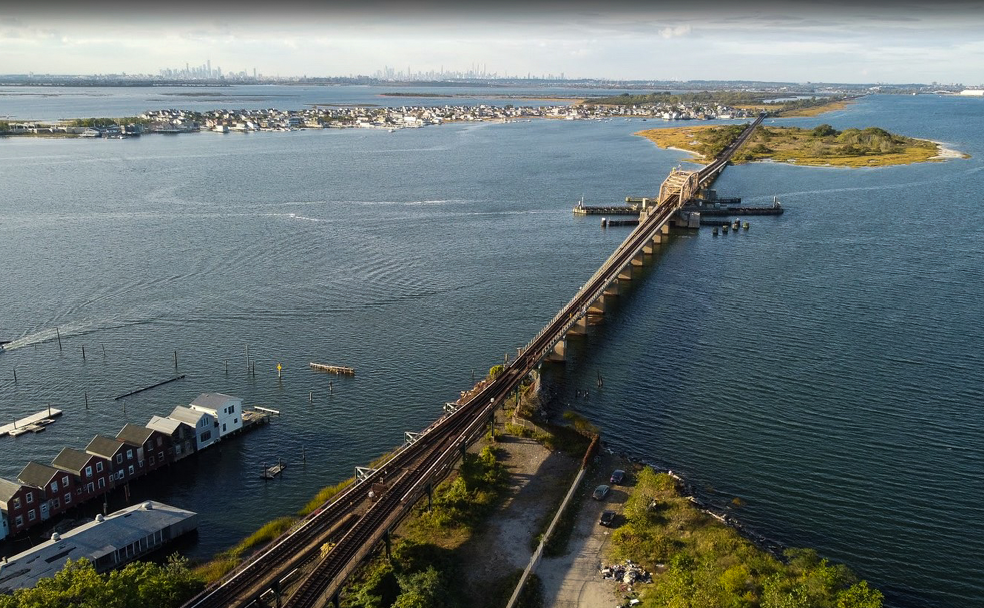Ivoire Lloyd, Director Business Development | EXP
A challenge for cities across the United States is navigating the effects of aging infrastructure. To maintain the position of economic hubs, cities including Chicago, New York City, Los Angeles and Washinton, DC are taking proactive steps to address longstanding wear and tear on their critical infrastructure.
In 2022, New York received a cumulative ‘C’ on the ASCE’s 2022 Report Card for New York’s Infrastructure. As one of the many cities grappling with the urgent need for revitalized infrastructure, New York agencies have emphasized the restoration and rehabilitation of the intricate transportation networks between the five boroughs. The ability to move people and goods with enhanced safety and efficiency spurs economic activity and quality of life for communities.
Major restoration projects are currently underway, including the Rockaway Line Rehabilitation & Resiliency Project, Penn Station, Connections at Staten Island, LaGuardia Airport Expansion and other projects to build New York’s roads, transit, bridges and airports.
To continue ongoing progress, transportation experts often ask the question, “What are immediate focus areas that can have long-term benefits to resolve our dated infrastructure?” At EXP, we’ve placed emphasis on key areas of funding, innovation, sustainability and equity.
Focus on Funding
For decades, cities have suffered from a lack of funding, resulting in projects that are beyond a good state of repair. The Infrastructure Investment and Jobs Act (IIJA) has been a valuable opportunity to modernize aging systems. A comprehensive funding strategy can result in more projects being completed throughout cities. To move projects along, a diversified funding approach is required. A combined approach helps cities meet their local, state and federal needs and includes:
- Public-Private Partnerships
- Historic preservation grants
- Community grants
Innovation + Sustainability
When funding is available, an emphasis can be placed on innovation and sustainability. There is an interconnection between infrastructure, sustainability and technology. Cities are forced to strike a delicate balance to uphold their historical legacy and create a modern infrastructure environment with reduced maintenance costs and delays. To keep pace with the speed of change, New York has stressed:
- Resilience planning
- Smart infrastructure
- Digital twin
- Sustainable materials
- Accessibility improvements
A combined approach is ongoing on the Metropolitan Transportation Authority’s Rockaway Line Rehabilitation & Resiliency Project. The backbone of New York City Transit is its signal system. With technology dating over 100 years, the replacement of legacy systems will bring more reliability and allow trains to run more often, helping people move to where they need to be, and allowing businesses to thrive. In addition, accessibility improvements and resilience efforts are moving the needle towards a smarter city.
Infrastructure Equity
An element that ties the complex approach together is an emphasis on equity. Systems only work if they are accessible to all New Yorkers. To address existing infrastructure disparities, projects must begin with planning and design considerations to increase access. The necessary inclusions are:
- Community engagement
- Increased involvement from Minority and Women-Owned Businesses and Service-Disabled Veteran-Owned Small Businesses on projects
- Affordable housing initiatives in infrastructure projects
There is no one-size-fits-all approach for tackling the enormous task of modernizing infrastructure throughout cities. Alleviating the stress on an exhausted system requires a comprehensive and robust approach that balances resiliency, equity and modernization. EXP’s New York team has worked with communities and local, state and federal agencies for over 40 years to advance systems for the better. The team brings a robust understanding of transportation issues riders, businesses and communities face.
To navigate your next infrastructure project, contact Vice President of Infrastructure Walter Clark and Director of Infrastructure Kevin Springle.

